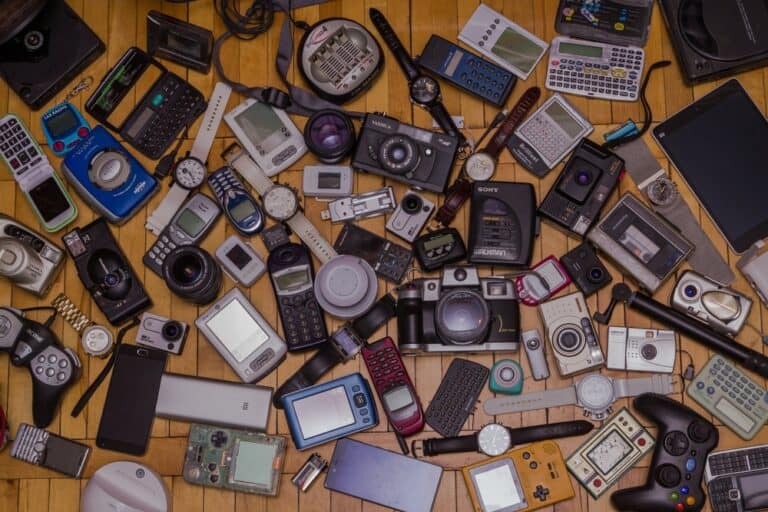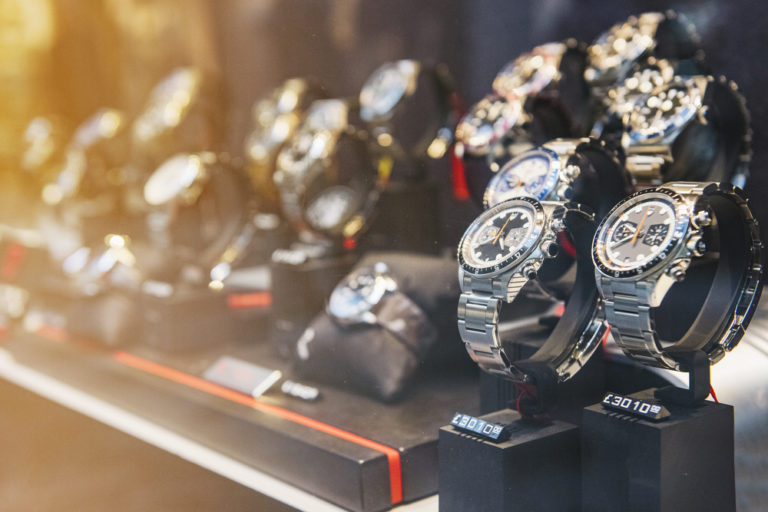All apple watches and other top-end watches use sapphire synthetic crystal glass for their watch faces. This hard, durable material has excellent reflective qualities and is the strongest in use; however, at the other end of the spectrum, acrylic glass provides a cost-effective way to manufacture lower-end watches.
Most watch faces are made from four materials, each of which offers advantages and disadvantages. The materials used in manufacturing watch faces are acyclic glass, mineral glass, a laminate of sapphire glass over the mineral glass, and sapphire synthetic crystal glass.
The price differential between the lowest-cost acrylic glass is twelve. It means that, while it is the best material to use as a watch face, sapphire synthetic crystal glass is twelve times more expensive than acrylic glass.
Watch Faces Are Made From Three Different Types Of Glass
It may be surprising that there are three types of “glass” commonly used don watch faces.
The primary determinant as to which glass is used for a specific watch face is cost and the degree of wear that it will experience.
The materials used in the manufacture of watch faces are:
- Acrylic Glass.
- Mineral Crystal Glass.
- Sapphire Coated Mineral Crystal Glass.
- Sapphire Synthetic Crystal (Sapphire Glass).
Acrylic Glass
Acrylic glass, also known as plexiglass, is essentially plastic and is the most commonly used material for watch faces.
Even though acrylic is a thermoplastic, the material’s visual properties are often technically classified as a type of glass called acrylic glass.
The material was developed in 1928 by several chemists and commercialized by the German company German Röhm & Haas AG in 1933. The polymer of methyl acrylate (PMA) is the technical name used for acrylic used for watch faces.
Since it was first introduced, In addition to being used as a watch face, PMA has found a use in several different applications, including the following:
- Residential and commercial aquariums.
- Viewing ports on ships.
- Pressure hulls of submersibles.
- The lenses of automobiles’ exterior lights.
- Spectator protection in ice hockey rinks.
- The bombardier’s transparent nose compartment in the second world war bomber, the Boeing B-17 Flying Fortress.
- The windows in riot control vehicles.
- Lighthouse lenses.
High-volume production facilities manufacture acrylic glass by heating and casting it into the final shape in curved molds and then polishing it with automated equipment.
During the 1970s, acrylic glass watch faces were used in most-watched, including high-end models from manufacturers such as Rolexes, Omegas, Longines, and Certinas.
This use has been curtailed, and they ate generally only found in cheaper watches.
Advantages And Disadvantages Of Acrylic Glass
The acrylic glass used in watch faces has several advantages and disadvantages.
The advantages of Acrylic glass are:
- Low cost.
- High tensile strength.
- High flexural strength.
- Good transparency characteristics.
- The glass can be polished.
- High levels of ultraviolet rays tolerance.
- Scratches can be easily buffed out.
The disadvantages of Acrylic glass are:
- A relatively low impact strength.
- Minimal scratch resistance.
- Easily compromised by chemicals.
- The low level of heat resistance.
Due to these factors, acrylic glass is now used for watch faces on budget and lower-cost units.
Mineral Crystal Glass
The mineral glass used in watch faces is conventional silica glass, which has been tempered at high temperatures to increase strength and improve the material’s reflective qualities.
The glasses are made from silica sand, limestone, and soda ash.
When cut to shape, they are ground and polished to meet the clarity targets, making them 100% optically correct.
Advantages And Disadvantages Of Mineral Glass
The mineral glass used in watch faces has several advantages and disadvantages.
The advantages of Mineral glass are:
- Mineral glass costs less than sapphire glass.
- The mineral glass used in watch faces is 100% optically correct.
- It resists scratches better than acrylic glass.
The disadvantages of Mineral glass are:
- Mineral glass costs more than acrylic glass.
- Mineral glass has lower tensile strength than acrylic glass.
- Made from completely natural material makes mineral glass the most eco-friendly solution.

Sapphire Coated Mineral Crystal Glass
Sapphire-coated mineral crystal glass is a middle point between mineral crystal glass and synthetic crystal.
This material is a conventional mineral crystal glass with a layer of sapphire laminate coating overlayed onto the surface of the glass.
After diamonds, sapphire laminate is the 3rd most scratch resistant substance next to moissanite and diamonds.
It was first used by the manufacturer, Seiko, under the brand name ‘Sapphlex.’
Advantages And Disadvantages
The advantages and disadvantages of sapphire-coated mineral crystal glass are as follows.
The advantages of sapphire-coated mineral crystal glass:
- Increases the tensile strength of mineral crystal glass.
- High impact strength.
- High flexural strength.
- Lower cost than a sapphire synthetic crystal (sapphire glass)
- Good transparency characteristics.
The disadvantages of sapphire coated mineral crystal glass:
- Higher cost than mineral and acrylic glass.
- Has been known to chip off the underlying mineral glass.
- If damaged, or in extreme cases scratched, it cannot be repaired.
Sapphire Synthetic Crystal (Sapphire Glass)
Like acrylic glass, Sapphire crystal is a synthetic material.
The first production of synthetic ruby crystals was run in 1902 in a process called flame-fusion.
Sapphire Synthetic Crystal (Sapphire Glass) is produced by mixing crystallizing pure aluminum oxide, by mixing it with “sapphire seed” and placing the uncrystallized sapphire in a furnace where it is heated to 2,2000C and left to cool for two weeks.
After cooling, it is cut into thin paper sheets ready for molding into the watch face glass.
Advantages And Disadvantages
The advantages and disadvantages of Sapphire Synthetic Crystal (Sapphire Glass) are as follows.
The advantages of sapphire synthetic crystal glass are:
- The material has a very wide optical transmission band.
- It is the third hardest material after moissanite and diamonds.
- It is the most scratch-resistant material used for watch faces.
- The material can withstand exceptionally high temperatures (2030 °C).
- Sapphire Synthetic Crystal has an excellent anti-reflection coating.
- Sapphire Synthetic Crystal has excellent clarity.
The disadvantages of sapphire synthetic crystal glass are:
- It is the most expensive material used for watching faces.
- Sapphire Synthetic Crystal has been known to shatter if hit at sufficient velocity.
- If Sapphire Synthetic Crystal is damaged, it cannot be repaired and must be replaced.
Conclusion
The four materials used to manufacture watch faces range from cost-effective acrylic glass to high-end watches that use Sapphire Synthetic Crystal (Sapphire Glass).
Each watch’s face material has advantages and disadvantages and, as a result, has different price points.







